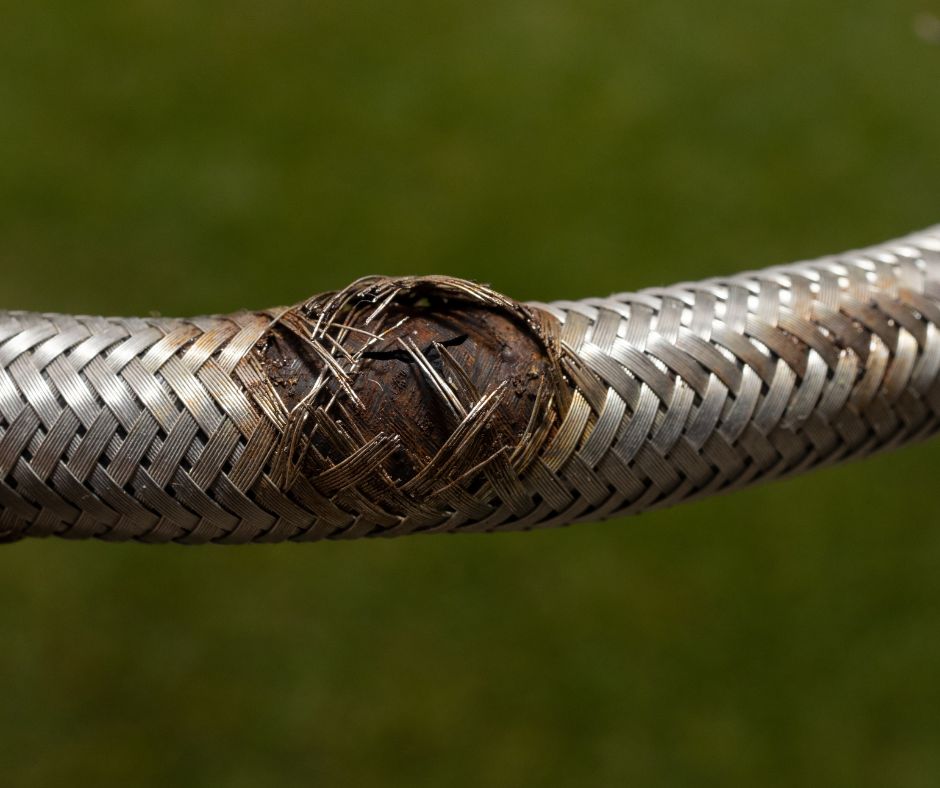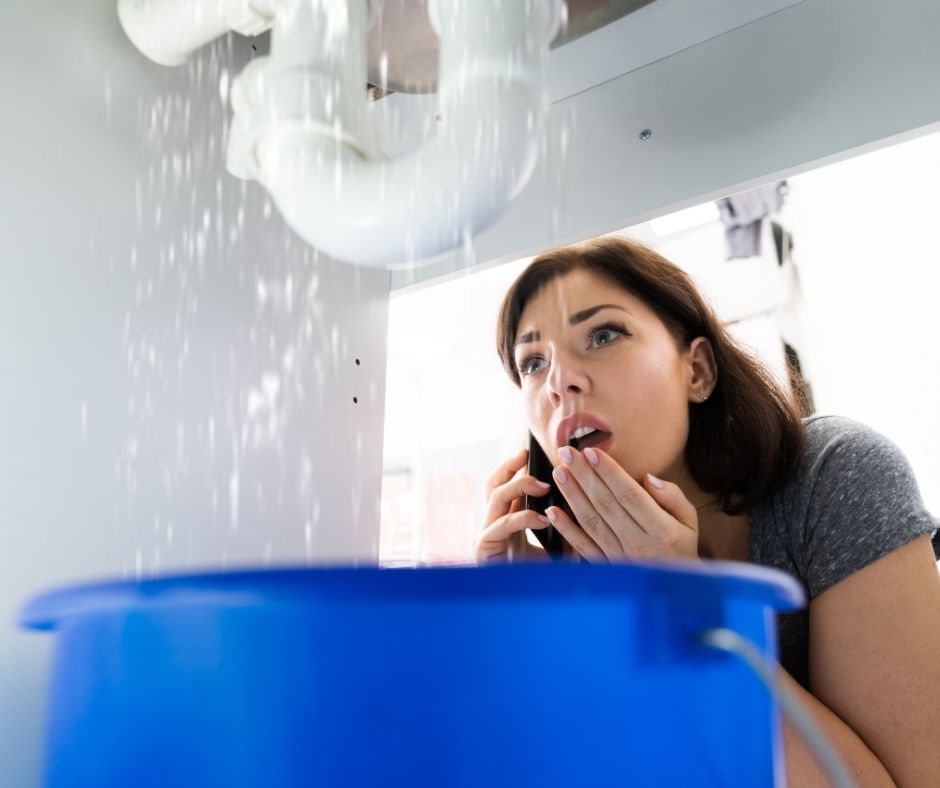Immediate Actions to Take When a Flexi Hose or Pipe Bursts in Your Home
Upon discovering a burst flexi hose or pipe in your residence, the very first step is to locate and turn off the main water supply at the meter. This action will effectively halt the flow of water. If you notice that water has reached any electrical points, it is crucial to shut off power at the switchboard immediately and avoid any contact with wet surfaces. To relieve pressure in the plumbing system, open nearby taps, and use towels or buckets to contain the escaping water. Remove any furniture and rugs from the area to minimise further damage, and take comprehensive photographs of the affected areas for your insurance claims. Finally, reach out to a licensed emergency plumber who has expertise in managing burst hoses for prompt repairs and thorough system checks.

In the short time it takes to brew a cup of tea, a burst pipe or a malfunctioning flexi hose can inundate your kitchen, damage floorboards, and saturate internal walls. The severity of these plumbing emergencies can escalate rapidly, underscoring the importance of quick action. In Wollongong, homeowners, especially those residing in older properties or near coastal areas, frequently encounter burst flexi hoses, which have become a prevalent cause of unanticipated water damage.
These plumbing issues often arise without any warning, and the speed of your response can mean the difference between a simple repair and an extensive renovation.
For residents in Wollongong, particularly in older homes or coastal regions, burst flexi hoses are increasingly recognised as a common source of sudden and severe water damage.
Essential Steps to Take Immediately After a Flexi Hose or Pipe Burst
1. Shut Off Your Main Water Supply Without Delay
Locate your water meter, which is typically positioned at the front of your property. Turn the valve clockwise to stop the water supply to your home. For those living in units or apartments, you may need to check under the kitchen sink or in the laundry area for an isolation valve that controls the water flow. Acting swiftly in this step is crucial to prevent further flooding and damage.
2. Turn Off Power at the Switchboard If Water Has Reached Electrical Points
It is imperative to turn off power from the main switchboard. Avoid touching any wet surfaces or switches in the vicinity of live electrical outlets, as this poses a severe safety risk. Prioritising your safety is paramount in such situations.
3. Drain Nearby Sinks or Showers to Relieve Pressure
Turn on taps in your home to help drain any remaining pressure from the plumbing system. Focus on the tap closest to the leak, as this will help reduce the ongoing release of water and mitigate potential damage. This action is essential for managing the water flow effectively.
4. Contain the Water Flow to Minimise Damage
Utilise buckets, towels, or even outdoor bins to capture the flowing water. Ensure that you remove rugs, paper, electronics, and furniture from the affected area to prevent additional damage. The faster you dry the floor, the better you can minimise the risk of permanent harm to your property.
5. Document the Damage for Insurance Purposes
Take clear photographs of the leak source, the extent of the water spread, and any visibly damaged items or surfaces. This documentation will be invaluable if you need to lodge an insurance claim later, as it provides evidence of the incident and the resulting damage.
6. Reach Out to a Licensed Emergency Plumber for Immediate Assistance
Contact a local, licensed plumber who offers after-hours service and has relevant experience in resolving flexi hose failures. Quick action is essential, particularly in Wollongong homes, which may contain older materials and are vulnerable to salt-related damage. Prompt professional help can make all the difference in mitigating further issues.
For immediate assistance, you can call CS Plumbing’s Emergency Service for a rapid, local response and same-day repair solutions.

Understanding the Reasons Behind Flexi Hose Failures in Wollongong Homes
Flexible braided hoses, commonly referred to as flexi hoses, are typically utilised under sinks, basins, and behind toilets to connect taps to water supply lines. Over time, the inner rubber lining of these hoses degrades, and the steel braid experiences corrosion, particularly in coastal environments like Wollongong. This degradation can lead to sudden and catastrophic failures.
In numerous homes across the Illawarra region, these hoses have not undergone inspection since their initial installation, with some being over 10 years old—well beyond their recommended service life. When these hoses ultimately fail, they usually split wide open, unleashing high-pressure water into cabinetry, floor cavities, or wall spaces, resulting in extensive water damage.
Several factors contribute to these failures, including:
- Salt air and high humidity that weaken fittings
- Poor-quality or unbranded hoses that lack durability
- Pressure spikes in older pipework that can stress the hoses
- Lack of fixture-level isolation valves that complicate immediate shutoff
The Importance of Upgrading and Isolating Every Flexi Hose in Your Home
Merely replacing one failed hose is insufficient. If one flexi hose has split, it is highly likely that others in your home are of a similar age and at an equal risk of failure. To safeguard your property for the long term, your plumber should take the following actions:
- Replace all old or unbranded hoses to prevent future issues
- Only utilise WaterMark-certified, pressure-rated flexi hoses for guaranteed safety
- Install mini stop taps (isolation valves) at every flexi hose connection for easy control
These isolation taps enable you to shut off water at the source—under the sink, behind the toilet, or in the laundry—without cutting off supply to the entire home. This capability allows you to stop a burst hose instantly, even before a plumber arrives, thereby reducing the potential for extensive damage.
This practice is now considered best practice for all new installations and is essential for older homes, particularly in areas like Figtree, Shellharbour, and Woonona, where outdated and legacy fittings are still prevalent.
Aftercare: Essential Steps to Take Once the Emergency Has Been Resolved
After your plumber has effectively resolved the issue, it is vital to implement the following aftercare measures:
- Run fans and dehumidifiers to prevent mould growth throughout your home
- Remove toe kicks or panels from flooded cabinetry to allow for adequate drying
- Schedule a comprehensive whole-home plumbing inspection to identify other risk points
- Add future hose checks to your seasonal home maintenance checklist to prevent recurrence
If the burst resulted in structural damage, it is essential to contact your insurer immediately with all documented evidence to ensure you are adequately covered for repairs.
Crucial Insights for Wollongong Homeowners on Preventing Burst Hose Disasters
The unfortunate reality is that most burst pipe emergencies we respond to in Wollongong originate from a $10 hose. A failed flexi hose can lead to a staggering $10,000 in water damage within just 15 minutes. Many of these incidents are preventable with simple measures. The upgrade process is straightforward, and the valves are compact. However, the impact they make when something goes awry is monumental.
If your home was constructed or renovated over five years ago, and your hoses have never been checked, it’s high time for an upgrade. Replace them, isolate them, and spare yourself the shock and stress of an emergency that could have been averted in mere seconds.
Emergency Plumber: Burst Pipe or Flexi Hose The Immediate Steps



This summary of immediate actions to take when a flexi hose or pipe bursts is really practical. In my experience, it’s often the first few moments after a burst that can make a significant difference in minimizing damage. I remember a situation where a hose burst while I was away for the weekend; returning home to a flooded kitchen was a nightmare. Your advice about documenting everything for insurance is spot on — I wish I had taken more pictures before things were cleaned up.
This is such an important topic, and your guidance on handling a burst flexi hose or pipe is incredibly practical. I recently had a similar situation in my own home, and it really underscored how critical it is to know what steps to take in such emergencies. It’s easy to feel overwhelmed in that moment, but your clear breakdown of actions really resonates.
I completely agree with you about how crucial it is to be prepared for situations like that. It’s one of those things we often don’t think about until it’s suddenly right in front of us. I remember facing a burst pipe once, and it felt like everything shifted into slow motion. The instinct is to panic, but having a clear set of steps to follow changes the game entirely.
It’s interesting how those unexpected situations, like a burst pipe, can turn our normal day around. Your experience highlights how panic can take over when something like that happens. Having a set of actionable steps ready can make a significant difference.
This post really highlights the importance of being prepared for the unexpected, especially when it comes to plumbing issues in our homes. I remember a time when I had a small leak in my kitchen that turned into a bit of a disaster. Thankfully, I was able to react quickly and follow some of the steps you’ve outlined, like turning off the main water supply and making sure to keep any electrics safe. However, I could have definitely been more organized in managing the situation, so your advice about photographing the damage for insurance claims is invaluable.
It’s so true how quickly something as seemingly minor as a burst flexi hose can turn a calm afternoon into chaos. I experienced something similar a few months ago when my kitchen sink started leaking. I remember feeling that panic as water began pooling on the floor while I scrambled to turn off the supply. It really drives home the importance of knowing your home’s plumbing setup and having a plan for emergencies like this.